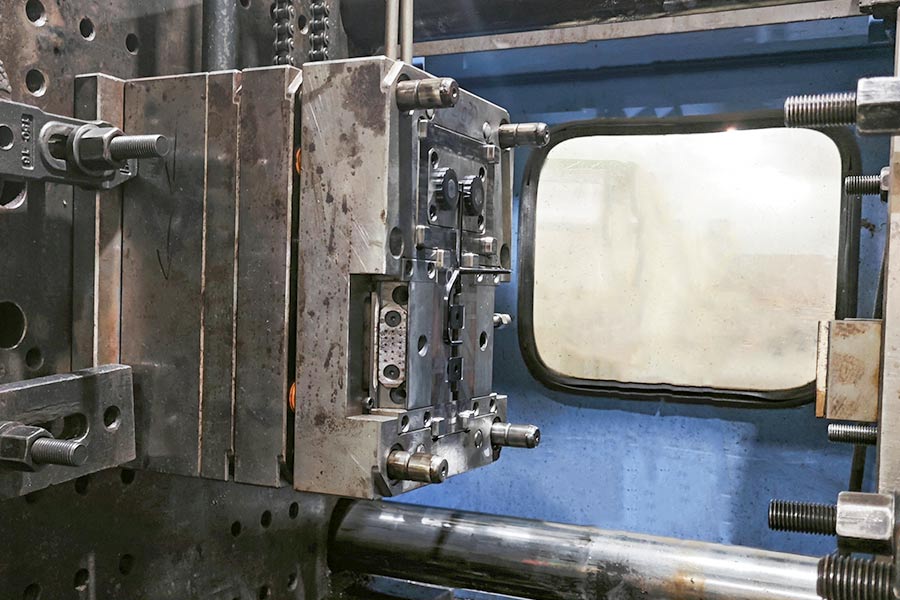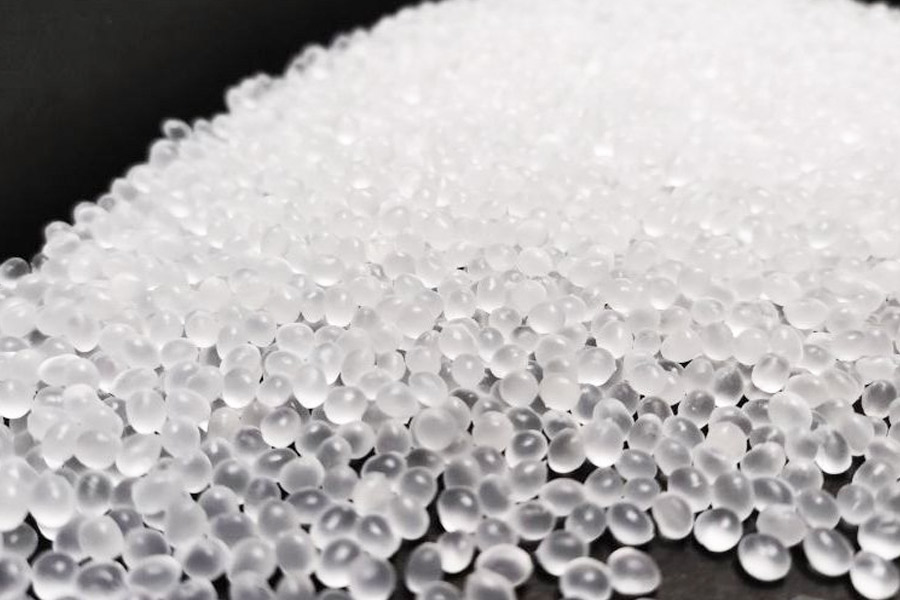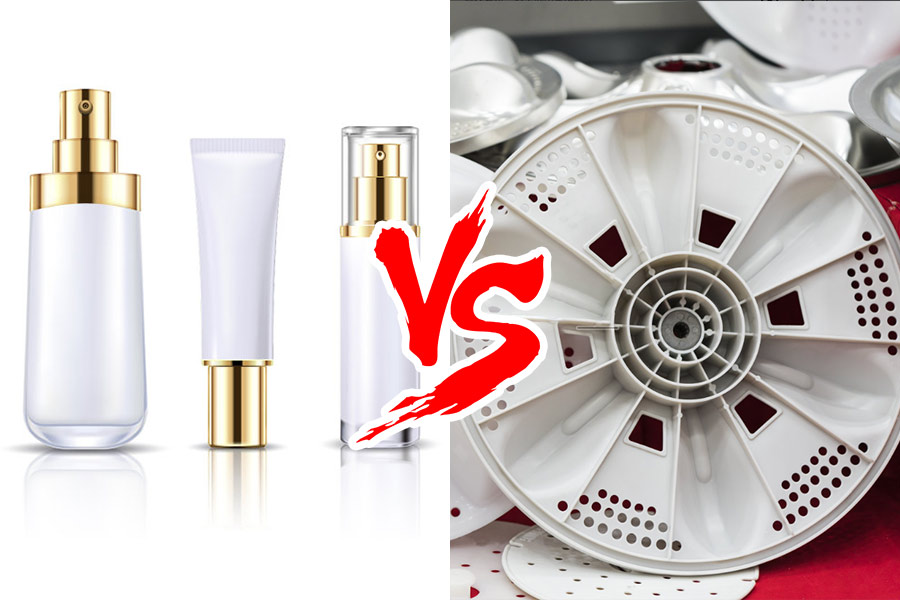Is prototype injection molding an oxymoron? When you’re like most designers, you’ve realized that plastic injection molding is for prime volumes of production-quality (i.e., non-prototype) parts. Perhaps you’ve additionally heard that Plastic injection molds are for more significant volumes, aluminum injection molds are for decreased volumes, and that each variety of mold is too costly for prototypes.
If any of this sounds acquainted, it’s time to unlearn a few of what you’ve been instructed and to re-think your prototyping and manufacturing choices. Sure, plastic injection molding is a high-volume manufacturing course. However, there are also occasions when it is appropriately used for prototyping and low-volume manufacturing. As for injection molds, there’s extra to think about than simply aluminum vs. metal.
Do prototype injection molds come at a price? Sure, however, there are methods to scale back your bills, as this text will clarify. Do injection molds take a very long time to supply? When you anticipate mold-making to take several steps, you’ll be pleasantly stunned to study that the correct manufacturing accomplice can produce tooling in only a few weeks. Consider your half design and materials choice, tooling prices, and machining occasions. Remember that assistance is offered whenever you share your part design with LongSheng. For instance, in case your design doesn’t include sufficient draft, our DFM specialists will recommend a more significant draft angle so that your parts eject easily.
LongSheng’s Injection Molding Design Information incorporates recommendations about draft injection molding.
what’s Prototype Injection Molding?

Prototype injection molding is an software in injection molding expertise, which is principally used to fabricate prototypes or samples of merchandise. Injection molding is a course of through which molten plastic is injected right into a mold and cooled to supply a plastic product of the specified form and measurement. Prototype injection molding focuses on the usage of this expertise to shortly and precisely produce a preliminary mannequin of the product for design verification, useful testing, market show or investor show functions.
The benefit of prototype injection molding is its capacity to supply a prototype that’s extremely near the ultimate product, permitting for a extra correct analysis of the product’s design, perform, and look. In comparison with guide or different prototyping strategies, prototype injection molding gives larger manufacturing effectivity, decrease price, and higher repeatability and consistency.
Within the prototype injection molding course of, it’s often essential to design and manufacture specialised molds, that are custom-made in accordance with the design of the product. Then, an injection molding machine is used to inject the molten plastic materials into the mold, and after cooling and curing, the specified prototype is obtained. These prototypes can be utilized for quite a lot of assessments and evaluations with the intention to determine and deal with potential points earlier than the product is formally produced.
It is very important observe that prototype injection molding is often used for small batch manufacturing or pattern manufacturing, slightly than mass manufacturing. For merchandise that require mass manufacturing, extra environment friendly and economical large-scale injection molding strategies are sometimes used.
On the whole, prototype injection molding is a quick, correct and economical prototyping methodology that’s extensively used within the product design, improvement and testing phases.
Half Design and Prototype Injection Molding
How mature is your half-design? When you’re not prepared for manufacturing, you’re, in all probability, nonetheless within the prototyping stage. However, which kind of prototype do you want?
- Proof-of-concept prototypes allow you to consider scale, type, and possibly some fundamental capabilities.
- Seems-like prototypes allow you to visualize the product’s closing look.
- Works-like prototypes allow you to validate type, match, and performance.
- Pre-production prototypes allow you to validate each the product’s closing look and utility.
This isn’t the only approach to categorizing prototypes; however, the above listing offers a framework for what follows.
3D Printed Prototypes vs. Injection-Molded Prototypes
Most proof-of-concept and looks-like prototypes don’t warrant the cost of injection molding. That’s because the designer typically wants only one or two parts, and it’s tough to justify the expense of an injection whenever you’re spreading the whole tooling value throughout only a few parts.
Works-like prototypes and pre-production prototypes are distinct stories. Typically, a designer wants half volumes measured in tens rather than single digits. Relying on the amount, it would make sense to use injection molding as a substitute for 3D printing, which doesn’t require tooling but is not the supposed manufacturing course.
Consider the distinction between molding one proof-of-concept prototype vs. 100 pre-production prototypes. In each situation, let’s say the instrument’s price is $10,000. For one proof-of-concept prototype, the per-part tooling value is $10,000. For 100 pre-production prototypes, the per-part tooling value is $100. That’s an enormous distinction.
The table explains what to consider when evaluating 3D printing vs. injection molding for prototyping.
| Parameter | 3D Printed Prototypes | Injection-Molding Prototypes |
| Design State | Evolving designs that are nonetheless within the idea phases | Completed designs that want real-world testing |
| Manufacturing Portions | The meager amount of necessities | Prototype portions that exceed 100 items |
| Lead Instances | Lead occasions of 1 to fifteen days | Leads occasions of two to five weeks |
Now consider design for manufacturability (DFM), the method of designing parts that are simple to fabricate. Let’s say you 3D-print some parts that you then assemble. They match together flawlessly and allow you to check the product’s performance.
That’s nice, however what if injection molding these identical parts ends in manufacturing failure? How can that occur? Your 3D-printed prototypes is likely to be excellent however don’t assume that degree of perfection will translate seamlessly into the proper injection molded half.
How Much Does LongSheng’s Injection Molding Prototypes Value Compared to Prototyping Strategies?
3D-printed IM instruments are excellent for low-volume prototypes or end-use parts manufacturing. For any application, it’s vital to determine what is low quantity and how it pertains to your product. This isn’t simple, so we advocate speaking with an expert to decide what makes the most sense for your utility and process.
Utilizing a 6 x 4 x 2 mannequin, we will set up a price evaluation for prototype injection mold tooling that compares LongSheng, fast prototyping, and traditional aluminum processes. Whereas it’s vital to note that aluminum mold will last for 1 – 10,000 parts, 3DP instruments are inexpensive and supply extra flexibility about design adjustments or half complexity. For instance, injection molded parts with sharp corners, skinny ribs, or undercut options will usually be costlier because they require a secondary course known as EDM machining. Complexity comes free with LongSheng and is nowhere near as expensive or problematic.
Design Guidelines, Half Options, and Tolerances
3D printing has different design guidelines, corresponding to minimum wall thickness, than injection molding. That’s vital to recollect because partitions that are too thick, skinny, or non-uniform are a frequent reason for failure in manufacturing injection molding. The easiest way to avoid this downside is to use prototype injection molding to create parts that allow you to determine any manufacturing challenges.
There’s extra to think about and more to consider, as 3D printing and plastic injection molding codecs are different. The STL records data utilizdatainting outline objects through a triangle mesh. Against this, the CAD records data are included in the injection-molded parameter-dri, ven. To use your 3D printing records with injection molding, you’ll have to convert them from a mesh to a form to a strong.
3D printing and injection molding even have different tolerances allowable for part-to-part variations. In most additive manufacturing applied sciences, the dimensional tolerance is at least 0.1 mm. Due to this, the deviations in 3D printing are more significant than with injection molding. Plus, injection molding has two varieties of tolerances: industrial and tremendous.
Are you prepared for some excellent news? LongSheng offers knowledgeable DFM help by 3D visualizing the injection molding. There’s also this handy online checklist to help you decide if you can go frowhetherinting to injection molding. Keep in mind that you don’t have to attend till your parts are ventilation-ready to get injection-molded samples.
Materials Choice and Prototype Injection Molding

Prototype injection molding and manufacturing injection molding can both use identical plastics. Nonetheless, abrasive supplies, such as glass-filled nylon, will trigger prototype injection molds to set up extra rapidly. (That’s because prototype molds are usually made out of softer supplies.) Nonetheless, if you plan to prototype 100 parts, setting up is much less complicated than a full-scale manufacturing run of 10,000 parts.
Commodity Plastics vs. Engineering Plastics

If your half design continues to be in its early phases, you could even resolve to use inexpensive commodity plastics. However, they don’t have mechanical properties identical to those of your supposed manufacturing supplies. For instance, PEEK is an engineering plastic that’s utilized in some medical gadgets. It prices considerably more than different polymers and will have an excessive minimal order amount (MOQ) if the provider doesn’t purchase it in sufficient volumes to obtain a reduction.
You might use inexpensive materials like polyphenylsulfone (PPSU) for a works-like prototype. In truth, PPSU is likely to be a tremendous selection. However, utilizing something aside from PEEK does not guarantee a complete check of your part’s moldability. Since PPSU and PEEK are both available as 3D-printing filaments, may you utilize additive manufacturing as a substitute? You’d save on tooling prices, and you could use the plastic that you want. Sounds easy, proper?
All Half Samples Aren’t the Identical
That strategy may not present what you want. 3D-printed supplies don’t have the identical end-use properties as their injection-molded counterparts. For instance, 3D-printed PEEK isn’t as sturdy as injection-molded PEEK. And in case your half is for a medical gadget, you’ll want consultant samples for the primary article inspection (FAI). The easiest way to get them is to use the identical materials and practical courses you intend for full-scale manufacturing. That’s injection molding.
Prototype Injection Molds: Past Metal vs. Aluminum
What’s the distinction between a prototype injection mold and a manufacturing injection mold? It’s not in regards to the steel that the mold is made out of. Manufacturing molds may be made of aluminum or metal, and prototype molds may be made of aluminum or metal. And it doesn’t stop there. A number of totally different steels are utilized in injection molds—and there isn’t only one type of aluminum.
SPI Lessons and Prototype Elements
There are additionally SPI classes for mold end to consider. In the desk below, take a look at SPI Class 105, which is for prototype portions.
| SPI Mould Class | Quantity | Cycles |
| 101 | Excessive | Over 1 million |
| 102 | Medium-to-Excessive | 500,000 to 1 million 50 |
| 103 | Medium | Underneath 500,000 |
| 104 | Low | Lower than 100,000 |
| 105 | Prototype | Lower than 500 |
What in regards to the different SPI mold courses? Ideally, a manufacturing injection mold is designed and constructed for the quickest cycle occasions, the best high-quality parts, and the longest tooling life (i.e., cycles). For prototype injection molds, lengthy instrument life is much less vital than half high quality, not several FAIs (first article inspections). Cycle time can also be much less vital, at the very least, if your objective in prototyping is to supply 100 consultant pre-production prototype parts.
Aluminum vs. Delicate and Semi-Hardened Metal vs. Hardened Metal Molds
Sure, the stat that mold is made from perfoperformsial function in all of this. How have you made more decisions than simply aluminum vs. metal? Mainly, you’ll be able to select:
- Aluminum in numerous grades
- Delicate and semi-hardened metal in multiple grades
- Hardened metal in various grades
Aluminum is your least costly selection, but it surely doesn’t produce injection-molded parts with tolerances that are as tight or exact as those with metal molds. That’s a difficulty if tight tolerances are required, however it will probably additionally have an effect on tolerance stack-ups in assemblies wseveralr of injection molded parts. Aluminum injection molds may be machined to tolerances of +/- 0.005 inches, however metal molds may be machined to tolerances as tight as +/-0.001 inches.
Delicate and semi-hardened steels sometimes value twice as much aluminum howe; ver don’,t rule them out for prototype injection molds. These steels can obtain tighter tolerances and aren’t so tough to machine that it takes months to chop an instrument. Whenever you work with LongSheng, you may get prototype metal molds in as little as 10 to 14 days.
Typically, hardened metal is used to manufacture injection molds. It’s costlier than comfortable or semi-hardened steels, but hardened metal lasts longer (i.e., more cycles) and may obtain tighter tolerances. Prototyping doesn’t have to supply thousands of parts. But what if you want tight tolerances for medical, aerospace, or other demanding functions? Aluminum won’t do.
Multiple Mold Materials and MUD Dies
Thadies are needed; injection molding helps use several mold surpluses. The bottom of a prototype mold may be made from aluminum or comfortable or semi-hardened metal. The inserts are made of soppy, semi-hardemay then, or hardenesoftal. If your mold requires transferring parts corresponding to lifters, these parts may be made from metal as correctly.
There are additional grass) inserts with a typical mold body customizedised, detachable inserts. MUD molds, as they are known, decrease the price of preliminary tooling by as much as 6. Nonetheless, they help the complexity many designers want for prototyping. If it is advisable to modify your design, as with common prototypes, a toolmaker can change the insert.
Lastly, prototype injection molding ensures that your mold makes use of the correct gate type and location in order that the mold cavity fills evenly and the plastic is held underneath stress lengthy sufficient to supply parts with constant high quality. An injection molder can use mold-flow-analysis software program as a substitute, however that gained’tput an element in your arms now, will it?
Evaluating the Prices of Fast Prototyping Strategies
| Course of | 25 Parts | 50 Parts | 75 Parts |
| Fast Prototyping | $1,250 | $2,500 | $3,750 |
| LongSheng IM Device | $300 + Materials Value | $300 + Materials Value | $300 + Materials Value |
| Aluminum IM Device | $5,000 + MC MC 5000 | $5,000 + MC MC 5000 | $5,000 + MC MC 5000 |
The table above compares several strategies for manufacturing several prototypes or low-volume manufacturing. As you’ll be able to see, fast prototyping of several parts begins to get comparatively costly as the amount increases; however, it continues to be nowhere close to the price of an aluminum instrument for lower than 100 parts. Nonetheless, the LongSheng IM instrument is inexpensive and as successful as mold parts with suitable end-use supplies. In truth, an engineering workforce can redesign a prototype injection mold instrument with LongSheng over 15 occasions for a similar value as a singular aluminum mold.
Download our free whitepaper to study how LongSheng’s mold tool works. Learn more about LongSheng’s mildew throughout the brand new product improvement course.
Learn More About LongSheng’s Rapid Prototype Injection Molding Services
Traditionally, 3D-printed instruments had been considered a gimmick and unqualified due to an absence of fabric capabilities. They had been brittle and unable to resist the excessive temperatures of molding, leaving many engineers with no viable difference. Fortify still introduced versatile, cheap, and powerful expertise sufficient to mold parts in end-use supplies. Ceramic fiber-reinforced materials are revolutionary for the prototype injection mold market, allowing a real bridge-to-production instrument that may save engineers money without sacrificing high quality.
Inject a wide range of thermoplastics, including polycarbonate, nylon 66, ABS, and POM, from a Fortify mold that’s 90-paper than aluminum. Traditional IM tooling can take as much as eight weeks to deliver parts; think about having those self-same parts within days. Quickly and usually fail by rapidly redesigning prototype IM instruments and testing parts instantly, attending to market sooner than then.
If you’d like to learn more about maximizing prototype injection molding with LongSheng Plastic mold manufacturer, contact our experts or upload your part design for a free quote.
FAQs
What’s draft injection molding?
Draft is a taper utilized to the faces of the half that forestall them from being parallel to the movement of the mold opening. This retains the half from being broken because of the scraping because the half is ejected out of the mold.



This is an amazing page. The outstanding information reveals the owner’s accountability. I’m in awe and eagerly await more amazing postings like this one.
This page is extraordinary. The magnificent data uncovers the proprietor’s responsibility. I’m stunned and sit tight for additional such marvelous posts.